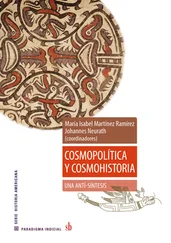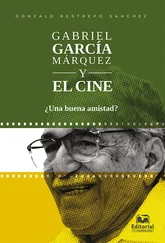Gabriel Josipovici - Touch
Здесь есть возможность читать онлайн «Gabriel Josipovici - Touch» весь текст электронной книги совершенно бесплатно (целиком полную версию без сокращений). В некоторых случаях можно слушать аудио, скачать через торрент в формате fb2 и присутствует краткое содержание. Год выпуска: 1996, ISBN: 1996, Издательство: Yale University Press, Жанр: Современная проза, на английском языке. Описание произведения, (предисловие) а так же отзывы посетителей доступны на портале библиотеки ЛибКат.
- Название:Touch
- Автор:
- Издательство:Yale University Press
- Жанр:
- Год:1996
- ISBN:0300066902
- Рейтинг книги:5 / 5. Голосов: 1
-
Избранное:Добавить в избранное
- Отзывы:
-
Ваша оценка:
- 100
- 1
- 2
- 3
- 4
- 5
Touch: краткое содержание, описание и аннотация
Предлагаем к чтению аннотацию, описание, краткое содержание или предисловие (зависит от того, что написал сам автор книги «Touch»). Если вы не нашли необходимую информацию о книге — напишите в комментариях, мы постараемся отыскать её.
Touch — читать онлайн бесплатно полную книгу (весь текст) целиком
Ниже представлен текст книги, разбитый по страницам. Система сохранения места последней прочитанной страницы, позволяет с удобством читать онлайн бесплатно книгу «Touch», без необходимости каждый раз заново искать на чём Вы остановились. Поставьте закладку, и сможете в любой момент перейти на страницу, на которой закончили чтение.
Интервал:
Закладка:
Doubting Thomas, he has since been called. What he wants is to confirm for himself that it is indeed the Jesus who was crucified who is standing there before him, and only by touching Jesus' wounds will his doubts be resolved. His attitude to the thing touched, though, is quite different from mine that day in Los Angeles or my friend's in Rome, or indeed from that of the countless pilgrims throughout the ages who have visited the Holy City to touch the foot of the statue of St Peter. (That foot, so worn away by the touch of pilgrims over the centuries, was the one object my friend told me he felt no need to touch. Not that he felt it was any less ancient than the other monuments, but the sight of it already being touched by hordes of tourists with cameras slung round their necks put him off. The object had lost its aura.)
But Jesus' response too, in the Gospel account, drives too sharp a wedge between faith and the world. The desire that drove thousands of pilgrims to the shrines of holy men, as before that to the shrines of local heroes in Greece and Asia Minor, was quite different from the desire of Doubting Thomas for confirmation, and quite other than the failure of faith that Jesus imputes to Doubting Thomas here. Partly, as Peter Brown has beautifully shown, it was the desire to converse with a human intercessor: ‘The praesentia on which such heady enthusiasm focussed’, writes Brown in The Cult of the Saints , ‘was the presence of an invisible person. The devotees who flocked out of Rome to the shrine of St. Lawrence, to ask for his favour or to place their dead near his grave, were not merely going to a place; they were going to a place to meet a person — ad dominum Laurentium .’ And he goes on:
The fullness of the invisible person could be present at a mere fragment of his physical remains, and even at objects, such as the brandea [little cloths which the pilgrims lowered on to the tomb below and then drew up] of Saint Peter, that had merely made contact with these remains. As a result, the Christian world came to be covered with tiny fragments of original relics and with ‘contact relics’ held, as in the case of Saint Peter, to be as full of his praesentia as any physical remains.
Thomas was, in effect, a modern sceptic, unwilling to trust anything he could not himself see and touch; the pilgrims on the other hand never doubted that virtue lay in the objects that were the goal of their journey. Yet the crucial notion of ‘going to a place to meet a person’, which Brown is at pains to place at the forefront of his discussion of early pilgrimage, makes it clear that the site of pilgrimage was not just the site of holiness and power, but rather the site of an encounter . The practice of pilgrimage has too often, in our post-Reformation world, been dismissed as but one aspect of an essentially ‘magical’ world-view, common to all primitive peoples, but which we have, fortunately, grown out of. Recently, however, historians like Peter Brown, Richard Southern and Eamon Duffy, and anthropologists like Clifford Geertz and Mary Douglas, have begun to unpack the word ‘magical’ and, by so doing, have shown up the nature of our own presuppositions while helping us to understand a little more about the workings of cultures not our own. At the same time what they have shown is that we should beware of making too sharp a distinction between cultures — what is ‘not our own’ may turn out to have more in common with what we do and think than we first imagined. Does Brown's concept of praesentia , after all, not help me to understand my own confused feelings that sunny day in Los Angeles?
True, I did not go down to the sea to meet a person, but I did not dip my hand in the water to test that it was really sea water either. Despite the enormous differences between the two experiences, Brown's discussion of early medieval pilgrimage may help us understand the nature of the mysterious impulse we all have to touch the world around us. But we need to follow him with care, and to start by distinguishing the matters he is dealing with from other, rather different attitudes to touching which we know to have existed in the Middle Ages.
10 The King's Touch
When Jesus began to perform his miracles of healing,
a certain woman, which had an issue of blood twelve years, And had suffered many things of many physicians, and had spent all that she had, and was nothing bettered, but rather grew worse, When she had heard of Jesus, came in the press behind, and touched his garment. For she said, If I may touch but his clothes, I shall be whole. And straightway the fountain of her blood was dried up; and she felt in her body that she was healed of that plague. And Jesus, immediately knowing in himself that virtue had gone out of him, turned him about in the press, and said, Who touched my clothes? And his disciples said unto him, Thou seest the multitude thronging thee, and sayest thou, Who touched me? And he looked round about to see her that had done this thing. But the woman fearing and trembling, knowing what was done in her, came and fell down before him, and told him all the truth. And he said unto her, Daughter, thy faith hath made thee whole; go in peace, and be whole of thy plague. (Mark 5: 25–34)
The notion of a healing power emanating from a holy man is to be found in most societies. So-called faith-healers still abound in the West today. It is rare, however, to find it expressed quite so directly and powerfully as it is here. More normal is the healing by laying-on of hands and the uttering of a sacred formula, and indeed we find in the Gospels numerous accounts of Jesus touching the affected parts of the blind and the lame, giving them verbal encouragement and sending them on their way whole again. What is perhaps surprising is to discover that the faith in the touch of a sacred person as a cure for disease persisted in the West right through to the beginning of the eighteenth century, though by that time it was no longer the martyr or the bishop who was believed to have the power to heal, but the monarch.
The English reader is likely to have come across the phenomenon first in Shakespeare. In the third scene of Act IV of Macbeth Shakespeare shifts the action from Scotland to the English court of Edward the Confessor, and to a conversation between two of Edward's courtiers. One of them says:
There are a crew of wretched souls
That stay his cure. Their malady convinces
The great assay of art; but at his touch,
Such sanctity hath heaven given his hand,
They presently amend.
(141–5)
Most annotated editions of Macbeth will at this point inform one that the courtier is here talking about the king's evil or scrofula, which, it was believed, could be cured by the touch of the kings of France and England. They usually go on to inform one that the last well-known person to have been touched in this way was Samuel Johnson who, as a three-year-old, was brought to London to be touched by Queen Anne in 1711.
Marc Bloch, the great Jewish-French historian murdered by the Nazis, devoted a whole book to the phenomenon, Les Rois thaumaturges (1923). Bloch demonstrates here with his customary erudition and elegance how the idea first arose in France and England just at the moment when it had become vital to strengthen the legitimacy of the ruling dynasties, and how it was reinforced over the centuries by the need to establish the monarch as the equal in every respect of the religious leader, the bishop or archbishop.
The king, writes a courtier at the French court in 1493, ‘heals the sick simply by the contact of his hand’, and in the description of a stained-glass window in Mont S. Michel we read: ‘He touches them one after the other with his right hand, from forehead to chin and from one cheek to the other.’ The making of the sign of the cross was not, however, essential; what was essential was the laying-on of hands, for it is the touch of the hands that cures the disease: ad solum manus tactum certos infirmos sanare dicuntur .
Читать дальшеИнтервал:
Закладка:
Похожие книги на «Touch»
Представляем Вашему вниманию похожие книги на «Touch» списком для выбора. Мы отобрали схожую по названию и смыслу литературу в надежде предоставить читателям больше вариантов отыскать новые, интересные, ещё непрочитанные произведения.
Обсуждение, отзывы о книге «Touch» и просто собственные мнения читателей. Оставьте ваши комментарии, напишите, что Вы думаете о произведении, его смысле или главных героях. Укажите что конкретно понравилось, а что нет, и почему Вы так считаете.












